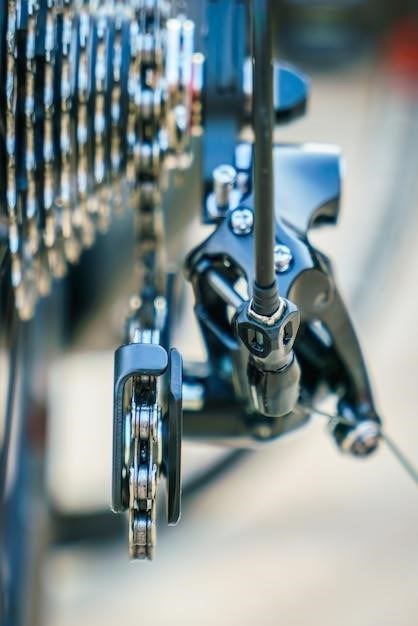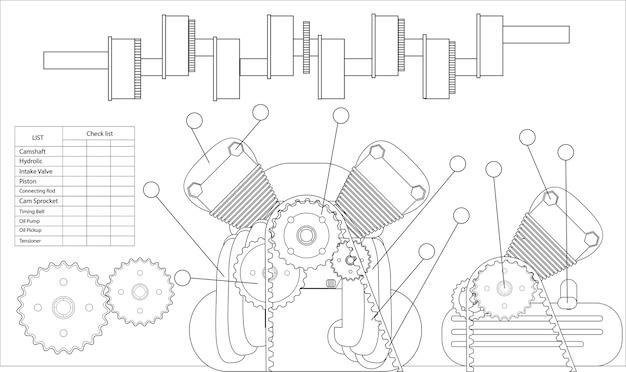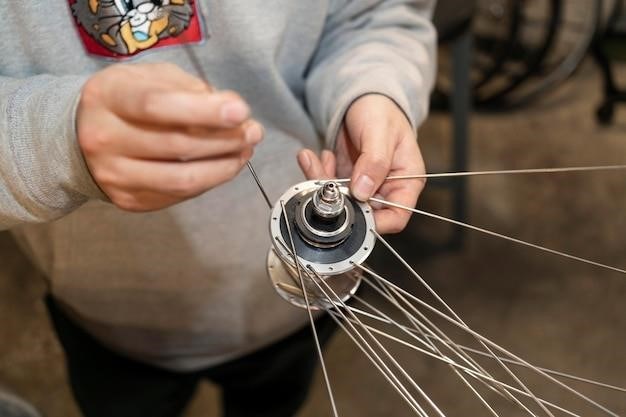Barnett Crank Cocking Device⁚ A Comprehensive Guide
This guide provides a detailed overview of Barnett crank cocking devices (CCDs), encompassing installation, operation, troubleshooting, maintenance, and safety procedures. Learn how to select the right CCD for your Barnett crossbow model and master safe cocking and uncocking techniques. We’ll cover essential maintenance for optimal performance and address common issues. Consult this guide for a complete understanding of your Barnett CCD.
Barnett crank cocking devices (CCDs) are essential accessories designed to significantly reduce the effort required to cock Barnett crossbows. These devices utilize a crank mechanism to smoothly and efficiently draw the crossbow string, minimizing the physical strain often associated with manual cocking. This is particularly beneficial for users with limited upper body strength or those seeking to reduce the risk of injury. Barnett offers various CCD models, each designed for compatibility with specific crossbow models; Choosing the correct CCD is crucial for optimal performance and safety. Proper installation and usage are essential to maximize the benefits of a CCD and ensure a safe and enjoyable shooting experience. Before using any CCD, carefully read the provided instructions and familiarize yourself with all safety precautions. Remember, a properly installed and maintained CCD can dramatically enhance your shooting experience, making cocking your Barnett crossbow significantly easier and more efficient.
Compatibility and Model Selection⁚ Finding the Right CCD for Your Barnett Crossbow
Not all Barnett crank cocking devices (CCDs) are compatible with every Barnett crossbow model. Before purchasing a CCD, carefully check the manufacturer’s specifications to ensure compatibility with your specific crossbow. Barnett provides detailed compatibility charts and lists on their website and in product manuals. Failure to use a compatible CCD can lead to improper installation, reduced performance, and potentially damage to your crossbow or injury to the user. Some CCDs are designed for specific crossbow series, while others may be universal, fitting a broader range of models. Pay close attention to the model number of your crossbow and cross-reference it with the compatible crossbow list for the CCD you are considering. If unsure about compatibility, contact Barnett customer service directly for assistance. Selecting the correct CCD is vital for a safe and efficient cocking process, maximizing the benefits of this valuable accessory while ensuring the longevity of your Barnett crossbow.
Step-by-Step Installation Instructions⁚ A Visual Guide with Diagrams

Installing a Barnett crank cocking device typically involves several steps. First, remove the crossbow’s butt plate, often secured by screws. Next, carefully align the CCD with the crossbow’s stock, ensuring proper positioning relative to the string and flight track. Secure the CCD to the stock using the provided screws or fasteners. Consult your specific CCD’s instructions for precise placement; variations exist between models. The string hooks of the CCD must engage correctly with the crossbow string. Pay close attention to diagrams and illustrations provided in the manual. Some models feature a safety latch; ensure it is engaged before proceeding. After securing the CCD, double-check all connections and fastenings for tightness and proper alignment. Incorrect installation can lead to malfunctions and potential injury. Always refer to the official Barnett instructions for your specific model. Improper installation can void warranties. Take your time and carefully follow each step to ensure a secure and functional fit.
Operating the Crank Cocking Device⁚ Safe and Efficient Cocking Techniques
Operating your Barnett crank cocking device (CCD) requires careful attention to safety procedures. Before commencing, ensure the safety mechanism on the CCD is engaged. This usually involves a latch or similar device. With the safety engaged, carefully position the CCD hooks onto the crossbow string, ensuring they are securely seated in the designated grooves. Avoid any forceful movements that could damage the string or the CCD. Begin cranking the handle smoothly and steadily. Never force the crank; if resistance is encountered, stop immediately and check for obstructions or misalignments. Listen for the characteristic clicking sound indicating proper engagement of the safety mechanism. Once the crossbow is fully cocked, you should feel distinct resistance. Disengage the safety mechanism before removing the CCD hooks from the string. Always keep your fingers clear of the moving parts during operation. Improper operation can lead to injury or damage to the crossbow. Consult the instructions for your specific Barnett CCD model for detailed guidance and safety precautions. Familiarize yourself with the device before using it in a hunting or shooting scenario.
Troubleshooting Common Issues⁚ Addressing Installation and Operational Problems
If you encounter difficulties with your Barnett crank cocking device (CCD), several common issues and their solutions are detailed below. First, check for proper installation. Ensure all screws are tightened securely, and the device is correctly aligned with the crossbow. If the crank feels stiff or binds, check for any obstructions or misalignments. Verify that the string hooks are correctly engaged with the crossbow string and are not caught on any parts of the crossbow. If the safety mechanism isn’t engaging properly, inspect the latch and ensure it’s functioning correctly. A clicking sound should be audible during cocking. If the rope appears frayed or damaged, replace it immediately. Never attempt to force the crank; doing so could result in damage to the CCD or the crossbow. If the problem persists, review the diagrams and instructions provided with your specific Barnett CCD model. If you’re still unable to resolve the issue, contact Barnett customer service for assistance. Accurate diagnosis and repair can prevent further damage or injury. Remember, safety is paramount when handling crossbows and their accessories.
Maintenance and Care⁚ Ensuring Long-Term Performance of Your CCD
Regular maintenance of your Barnett crank cocking device (CCD) is crucial for ensuring its longevity and safe operation. After each use, inspect the CCD for any signs of wear and tear. Pay close attention to the rope, checking for fraying, kinks, or damage. Replace the rope immediately if any issues are detected. Clean the CCD with a soft cloth and mild detergent, removing any dirt or debris that may accumulate. Avoid using harsh chemicals or abrasive cleaners, as these can damage the device. Lubricate the moving parts of the CCD with a light, crossbow-safe lubricant, ensuring smooth operation and preventing friction. This is particularly important for the crank handle mechanism. Store the CCD in a cool, dry place, away from direct sunlight and moisture. Avoid storing the CCD with the rope under tension. Periodically inspect the screws to make sure they remain tightened to prevent loosening and potential damage. By following these simple maintenance steps, you can significantly extend the lifespan of your Barnett CCD, ensuring years of reliable and safe cocking for your crossbow.
Safety Precautions⁚ Preventing Injury and Damage to Your Crossbow
Safety is paramount when using a Barnett crank cocking device (CCD). Always ensure the safety mechanism is engaged before attempting to cock the crossbow. Never attempt to cock the crossbow with wet or damp hands, as this can lead to slippage and potential injury. Never turn the crank handle backward while cocking the crossbow; this can severely damage the rope and the CCD itself. Always keep your fingers clear of the string and the moving parts of the CCD during operation. Inspect the crossbow and CCD for any signs of damage before each use. Do not use the CCD if any parts are damaged or broken. Never point the cocked crossbow at anything you do not intend to shoot. Treat the crossbow and CCD with the respect they deserve; they are powerful tools that can cause serious injury if mishandled. Always store the crossbow and CCD in a safe place, out of reach of children and unauthorized individuals. Always wear appropriate eye protection when cocking and shooting the crossbow. Familiarize yourself with the complete instructions provided by Barnett before operating the device. Failure to follow these safety precautions can lead to serious injury or damage to your equipment.

Uncocking Your Crossbow⁚ Safe Methods with a CCD Attached
Uncocking a Barnett crossbow with a crank cocking device (CCD) attached requires a cautious approach to prevent injury and damage. Never attempt to forcefully uncock the crossbow by hand; this could lead to serious injury. The recommended method involves using a dedicated uncocking device or following the specific instructions provided by Barnett for your crossbow model. If neither of these options is available, a safe method is to discharge the crossbow by shooting an arrow into a suitable, safe target, such as a large earthen berm. This ensures the crossbow is safely uncocked. Before uncocking, ensure the safety mechanism is engaged to prevent accidental discharge. Always inspect the string and cables for any signs of wear or damage before and after uncocking. Replace damaged components immediately. If the CCD is equipped with a reverse crank function (check your manual), use it according to the manufacturer’s instructions. Never attempt to reverse the crank if the safety is engaged; this could damage the device. Remember, proper uncocking is crucial for maintaining the crossbow’s integrity and preventing potential accidents. Always prioritize safety when handling a loaded crossbow.
Warranty Information and Customer Service⁚ Contacting Barnett for Support
Barnett offers a warranty on their crank cocking devices, typically covering manufacturing defects for a specified period (often one year) from the date of purchase. This warranty usually covers parts, labor, and return transportation to the consumer. However, it typically excludes damage caused by misuse, modification, or neglect; wear and tear on parts such as ropes; transportation costs to the service department; and consequential or incidental damages. To validate your warranty, register your product within the specified timeframe (often 10 days of purchase). For warranty claims or customer service inquiries, do not return the device to the retailer. Contact Barnett directly. Include your name, address, phone number, and a detailed description of the problem. Pack the device securely, prepay shipping, and send it to the designated Barnett service address. Clearly mark the package as a “Service Return.” Barnett’s website or product manual usually provides contact information, including a phone number and email address. For the most up-to-date warranty details and service procedures, always refer to the included documentation or the official Barnett website.
